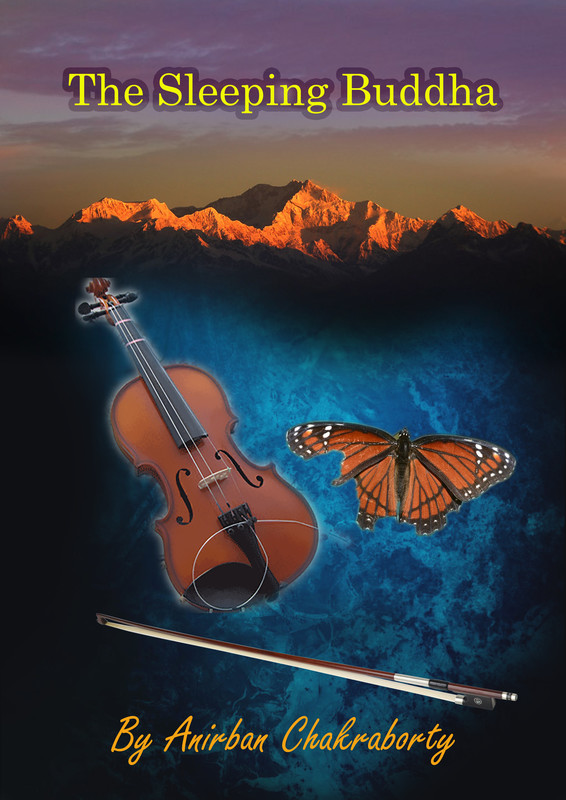The Sleeping Buddha

CAT INDEX
CAT INDEX OVERVIEW
SCREENPLAY
MAKING
ACTING
Directed by Anirban Chakraborty | Reviewed by Sabarno Sinha
Anirban Chakraborty’s 2021 long short, “The Sleeping Buddha” deserves a balmy salute for having created magic during the lockdown and COVID pandemic when severe restrictions have to be faced by Indian filmmakers more than ever. The long short of 40 minutes captures the multifarious ways in which love can manifest in the lives of people and how the negligence of the same only causes pain, anger and remorse at the very end.  At the very beginning, we are introduced to the protagonists, Buddhadev Dasgupta and his wife, Gunjan, both of whom exist in a loveless marriage and while Gunjan tries to bring it back to life repeatedly, her husband seems most unwilling. The reason, however, is not told to us directly until the climactic scene but Chakraborty has dropped several hints throughout the film so that the audience may be able to figure out his homosexuality. The very title of the film and the comparison drawn between Buddhadev and Kanchenjunga directly by the wife is but a premonition of what we may have to face. The patient and quiet mountain of the old shall burst into life once again and rise from its deep slumber. The characterization of the other major characters, namely, Raja and Damayanti, is done very well and they are perfectly able to convince the audience of their bold and unbridled natures which would go on to emancipate and reveal the true spirit of the protagonists who have suppressed their own emotions in various ways. For Gunjan, she has devoted herself to her child and family and Buddhadev has simply found his father-in-law and his “loss marriage” to Gunjan to be the biggest cause of suffering for him. Damayanti is the one who makes Gunjan ready for the adventure that she is about to have. Without her, the forced wallflower would never have found reason or accepted someone who would help her bloom again. Damayanti’s passionate and candid disposition as well as her quirky dialogues on constraints in society helped Gunjan reflect on her own loveless marriage that was no less than hell.
At the very beginning, we are introduced to the protagonists, Buddhadev Dasgupta and his wife, Gunjan, both of whom exist in a loveless marriage and while Gunjan tries to bring it back to life repeatedly, her husband seems most unwilling. The reason, however, is not told to us directly until the climactic scene but Chakraborty has dropped several hints throughout the film so that the audience may be able to figure out his homosexuality. The very title of the film and the comparison drawn between Buddhadev and Kanchenjunga directly by the wife is but a premonition of what we may have to face. The patient and quiet mountain of the old shall burst into life once again and rise from its deep slumber. The characterization of the other major characters, namely, Raja and Damayanti, is done very well and they are perfectly able to convince the audience of their bold and unbridled natures which would go on to emancipate and reveal the true spirit of the protagonists who have suppressed their own emotions in various ways. For Gunjan, she has devoted herself to her child and family and Buddhadev has simply found his father-in-law and his “loss marriage” to Gunjan to be the biggest cause of suffering for him. Damayanti is the one who makes Gunjan ready for the adventure that she is about to have. Without her, the forced wallflower would never have found reason or accepted someone who would help her bloom again. Damayanti’s passionate and candid disposition as well as her quirky dialogues on constraints in society helped Gunjan reflect on her own loveless marriage that was no less than hell.  Thereafter, the chance encounter with Raja Chowdhury, a violin teacher in the village, turns out to be the most fateful for the couple as he is the one who helps the two realise the inadequacies in their own lives. After rescuing Gunjan from some miscreants, his meeting with her husband insinuates much from the very beginning and our suspicions are confirmed in the climactic scene, i.e., when he plays the violin during the bonfire. The twin forces of Damayanti’s critiques and Raja’s soothing music are enough for the couple to be aware of their own feelings as regards Raja. The burning of the bonfire symbolises the reignition of the passion and Chakraborty’s depiction of Raja as one who kindles flames in the hearts of both men and women is shown in the subsequent scenes. Raja’s declaration of love as an abstract concept that can be induced and raised by men and women for the same as well as opposite sexes is the final straw but Gunjan is unable to understand it till she finds her husband in bed with him. Raja’s valiant acceptance of this love is perhaps there to indicate how the couple must also face this truth. However, it seems that Buddhadev might have been aware of it in some way but the revelation was completely new for his wife. Wooed by the poetry of Raja, his beauty and talents, she is unable to accept how the man who is attracted to her, also loves her husband equally. For symbolic reasons, the choice of the location and the backdrop of the Sleeping Buddha range gives the film an extra dimension. The story has great potential and the film does touch an important message that requires attention in the 21st century. My chief complaints with the film are with regards to its video and sound editing as well as cinematography. The dialogues are muffled throughout the film and there are jarring cuts and errors of editing visible. Although the drone shots of the mountainous roads are a treat for the city eyes, a number of shots in the film are badly planned, constructed and executed. These technical glitches mar Chakraborty’s gigantic vision which looms large throughout the film and reduces the overall quality of the film. Yet, the story, the beautiful background score and violin pieces render a poetic quality to the film which doesn’t leave till the very end. It is for these that “The Sleeping Buddha” remains a film of good quality that has been made ambitiously.
Thereafter, the chance encounter with Raja Chowdhury, a violin teacher in the village, turns out to be the most fateful for the couple as he is the one who helps the two realise the inadequacies in their own lives. After rescuing Gunjan from some miscreants, his meeting with her husband insinuates much from the very beginning and our suspicions are confirmed in the climactic scene, i.e., when he plays the violin during the bonfire. The twin forces of Damayanti’s critiques and Raja’s soothing music are enough for the couple to be aware of their own feelings as regards Raja. The burning of the bonfire symbolises the reignition of the passion and Chakraborty’s depiction of Raja as one who kindles flames in the hearts of both men and women is shown in the subsequent scenes. Raja’s declaration of love as an abstract concept that can be induced and raised by men and women for the same as well as opposite sexes is the final straw but Gunjan is unable to understand it till she finds her husband in bed with him. Raja’s valiant acceptance of this love is perhaps there to indicate how the couple must also face this truth. However, it seems that Buddhadev might have been aware of it in some way but the revelation was completely new for his wife. Wooed by the poetry of Raja, his beauty and talents, she is unable to accept how the man who is attracted to her, also loves her husband equally. For symbolic reasons, the choice of the location and the backdrop of the Sleeping Buddha range gives the film an extra dimension. The story has great potential and the film does touch an important message that requires attention in the 21st century. My chief complaints with the film are with regards to its video and sound editing as well as cinematography. The dialogues are muffled throughout the film and there are jarring cuts and errors of editing visible. Although the drone shots of the mountainous roads are a treat for the city eyes, a number of shots in the film are badly planned, constructed and executed. These technical glitches mar Chakraborty’s gigantic vision which looms large throughout the film and reduces the overall quality of the film. Yet, the story, the beautiful background score and violin pieces render a poetic quality to the film which doesn’t leave till the very end. It is for these that “The Sleeping Buddha” remains a film of good quality that has been made ambitiously.
 Sabarno Sinha is an undergraduate student of English at Jadavpur University, Kolkata. He was active in the debating and MUN circuit in Kolkata. Sabarno frequently writes short stories, poems and screenplays for short films. A lover of world cinema, Sabarno finds pleasure in watching contemporary as well as classic films from Japan, Italy and Germany among others.
Sabarno Sinha is an undergraduate student of English at Jadavpur University, Kolkata. He was active in the debating and MUN circuit in Kolkata. Sabarno frequently writes short stories, poems and screenplays for short films. A lover of world cinema, Sabarno finds pleasure in watching contemporary as well as classic films from Japan, Italy and Germany among others.


